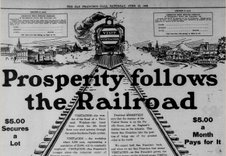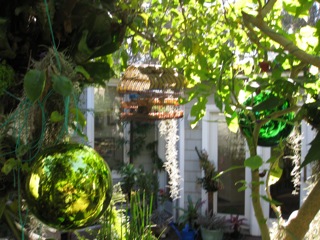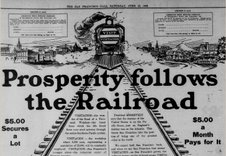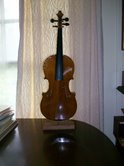Story by June Morrall
Annie C. Mullen was a little girl when she lived through the 1906 San Francisco earthquake and fire.
In Half Moon Bay boulders tumbled onto Highway 92 and the Levy Brothers General Store collapsed.
“A bull in a china shop shop would be a fair comparison of what can happen in a printing shop when an earthquake is turned loose within,” a Redwood City newspaper wrote of damage to its office.
Annie Mullen was familiar with the Coastside and Redwood City. Her father, John Mullen, an early settler in east Miramar, later became a county assessor.
When the great Kanto earthquake struck Japan in 1923, Annie had been in Japan, working as a secretary for General Elecric in Tokyo for five years.
It was 11:50 a.m. on Saturday, September 1, 1923, when Japan was rocked with the “impact of a terrestrial fist.”
Our 15-second quake in 1989 made Bay Area residents re-examine accounts of the 1906 earthquake. Estimates on how many died in the 1906 earthquake vary between 700 and 2,500.
Few Americans know about the great Kanto earthquake of 1923. Incredibly, 120,000 people were killed. There were major shocks over a period of hours followed by tidal waves and firestorms. Messages told of mountains that slid into the valleys, of waves that swept hundreds of swimmers into the sea and of a Yokohama hotel that “sank into the earth.” Street lights in crowded Tokyo teetered, the earth moved up and down, and buildings swayed like “so much paper.”
The so-called “Cloud Scraper,” the tallest building in Toyko at 12-stories, snapped in two at the eighth floor. Bricks and stones toppled down onto scurrying pedestrians.
For two days fires raged, greedily consuming flimsy wooden structures. Burn victims died in the streets. Automobile traffic was frozen and trains were halted 100 miles from Tokyo. Telegraph lines were down and cables disrupted. An important cable between Guam and Yokohama had been silenced.
Yokohama, where Annie Mullen lived, along with about 1,000 other Americans, was a significant port city. It had been hard hit, and in the wake of the earthquake, the city was ablaze with a tidal wave that brought more devastation. The busy harbor lay in ruins. The refugees were so desperate that they sought safety aboard ships in the harbor.
Meanwhile, the former Coastsider, John Mullen, was frantically trying to confirm the whereabouts of his daughter. Then 84, Mullen was living on Fell Street in San Francisco where two of his sons lived.
On September 4, the Redwood City Tribune reported:”…Friends…are apprehensive today concerning that young woman’s safety…No word has been obtained by relatives in San Francisco from Miaa Mullen.”
Many old-time Coastsiders counted among those who worried about Annie. At one time the Mullen name was so well known in Half Moon Bay that serious consideration had been given to officially changing the name of the Arroyo de en Medio Creek in Miramar to “Mullen’s Creek.” It was often called that by the locals anyway.
Joan and Ann Mullen immigrated directly from Ireland, settling in Miramar in 1869. Mullen, who spoke and taught Gaelic, was hired to run Amesport Landing at present day Miramar.
The wharf had been built by a San Mateo County supervisor in 1868. It ir rumored that in partial payment for his services, John Mullen was given land in East Miramar to build his farmhouse.
The historic Mullen Farmhouse stands on tree-lined Purissima Way, a county lane that still has the power to transport visitors back in time.
From the top floor of the farmhouse, John Mullen enjoyed a bird’s eye view of Amesport Landing, which grew into a tiny community,. The wharf was a commercial link with the outside world. Produce was shipped on the little steamers: Gypsy, Salinas, and Vicente packed with crucial supplies of coal to heat to heat chilly Coastside homes.
From 1860 to about 1890, John Mullen, assisted by son William, managed Amesport Landing. When the Ocean Shore Railroad came on the scene circa 1907-8, Amesport had already slipped into a steep decline. Amesport was never able to compete with either the railroad or the new “private vehicles on wheels,” and the little shipping village never recovered.
Eventually John Mullen and some members of his family moved to Redwood City and later to San Francisco.
Annie Mullen grew up with three brothers and two sisters: Hugh, Edward, William, Clara and Minnie. Until Clara’s death in 1958, she lived in the farmhouse, built by her father.
Records reveal that Annie went to Japan in 1918. She last visited San Francisco in 1922, while enjoying a week’s furlough. She was to have spent one more year in Japan before returning to the United States permanently.
On September 5, 1923, U.S. Ambassador Woods sent a message from Japan by wireless pointing out that the situation was “exceedingly serious” in Yokohama, where he said many Americans perished. It was reported that Yokohama’s streets and canals were filled with dead bodies.
But Ambassador Woods had no word of Annie Mullen. There was great concern because the office in which she worked was said to be located in the heart of the devastated area of Tokyo.
Fears intensified when one of the casualties was identified as A.T. Blume, who also worked for General Electric. Others, including officials of the company, also died in the earthquake. Names of those who were killed in Yokohama and Tokyo were printed in local newspapers—but Annie’s name was not found among them.
The Mullen family was heartened by “fragmented” reports indicating that Annie had been only “slightly injured.” And the family rejoiced when they learned she was reported on board the S.S. Empress of Australia, a passenger on her way home.
Just imagine their shock and pain when the family received received the final word on September 17 that Annie Mullen had died on the ship while en route home.
——
A new-old story by June Morrall
…more
…more coming

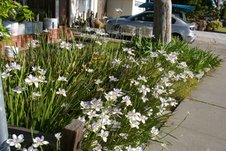


 . Enjoy. John
. Enjoy. John 